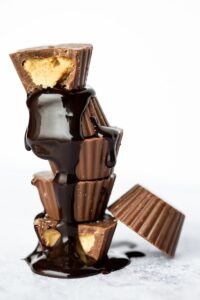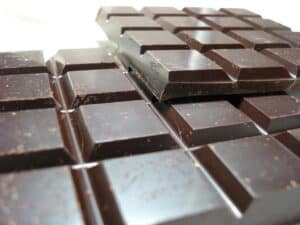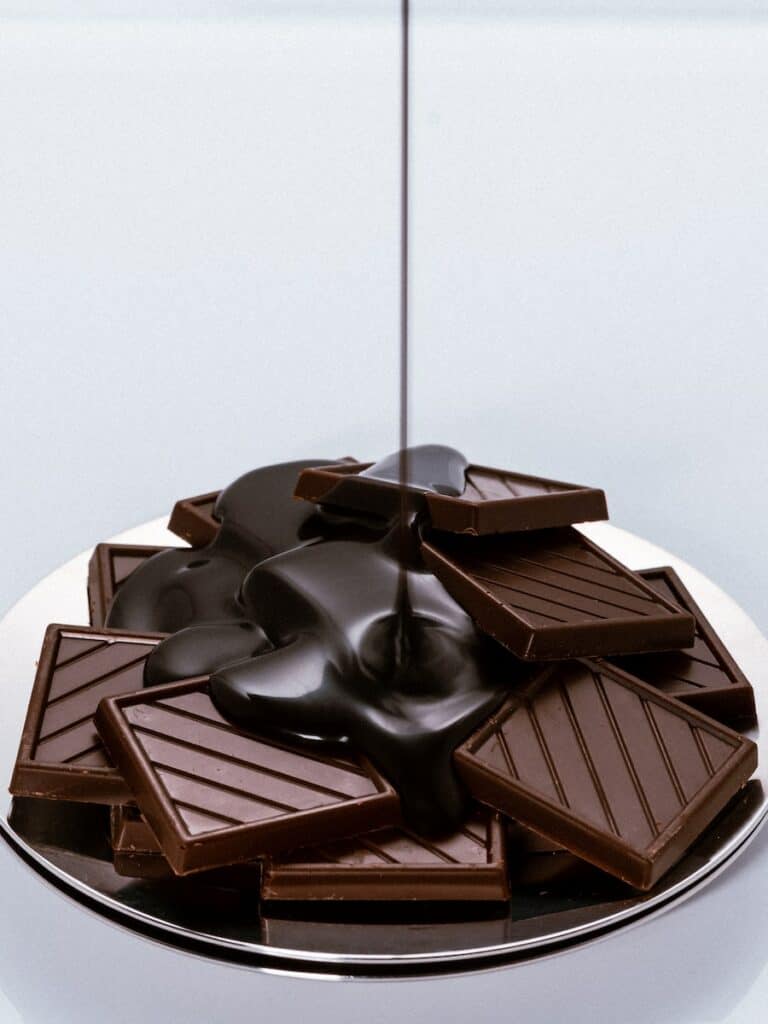Coloring chocolate is a fun and creative way to add a splash of color to your desserts and treats. Whether you’re making chocolate lollipops, decorating cakes, or simply drizzling colored chocolate over your favorite dessert, knowing how to color chocolate will open up a world of possibilities. In this guide, we will explore different ways to color chocolate, including using food coloring, candy melts, and more.

How to Color Chocolate: Preparing the Chocolate
Before you begin coloring your chocolate, it’s essential to choose the right type of chocolate for your project. Dark chocolate, milk chocolate, and white chocolate all have different melting points and will react differently to food coloring. For the best results, use freshly purchased chocolate at room temperature.
To melt the chocolate, use a double boiler or microwave method. If using a double boiler, place a metal bowl over a pot of warm water, ensuring the water does not touch the bowl. Add your chocolate chips or pieces to the bowl and slowly melt, stirring occasionally. For the microwave method, place your chocolate in a microwave-safe bowl and heat in 30-second intervals, stirring after each interval to ensure even melting.
Using Food Coloring to Color Chocolate
Food coloring is a common way to color chocolate, but it’s essential to choose the right type for your project. Here are some popular food coloring types and how to use them with chocolate:
Oil-Based Food Coloring
Oil-based food coloring is the best choice for coloring chocolate, as it won’t cause the chocolate to seize or become grainy. To use oil-based food coloring, add a few drops to your melted chocolate and mix until you reach your desired shade. You can find oil-based food coloring at most craft stores or online.
Powdered Food Coloring
Powdered food coloring is another suitable option for coloring chocolate. To use powdered food coloring, dissolve the powder in a small amount of vegetable oil or warm water before adding it to your melted chocolate. Start with a small amount of powder and add more or less depending on the desired shade.
Liquid Food Coloring
Liquid food coloring is not recommended for coloring chocolate, as it can cause the chocolate to seize. However, if you must use liquid food coloring, make sure to use a small amount and mix it with a small amount of vegetable oil before adding it to the chocolate.
Other Methods for Coloring Chocolate

Candy Melts
Candy melts, also known as confectionery coatings, are an easy way to color chocolate. They come in a variety of vibrant colors and can be melted just like regular chocolate. To use candy melts, simply melt them according to the package instructions and use as desired.
Combining Cocoa Butter and Powdered Food Coloring
Another method to color chocolate is by combining cocoa butter and powdered food coloring. Melt a small amount of cocoa butter in a warm bowl and add the desired amount of powdered food coloring. Mix until the color is evenly distributed, then add the colored cocoa butter to your melted chocolate, stirring until combined.
Using Food Dye Metallics
Food dye metallics, such as gold or silver, can be used to paint chocolate subjects or add a touch of glamour to your chocolate creations. Mix the metallic food dye with a small amount of pure alcohol and use a clean, food-safe paintbrush to apply the color to your chocolate.
Tips for Coloring Chocolate
- Always ensure that your chocolate is completely melted and smooth before adding any color. If the chocolate begins to cool and set, it may not accept the color as evenly.
- When coloring chocolate, be sure to mix the color in thoroughly to avoid any streaks or uneven shades.
- Use a wooden skewer or toothpick to help mix the color into the chocolate, as this will help to incorporate as much air as possible, reducing the risk of air bubbles.
- If using chocolate molds, be sure to tap the mold gently on a baking tray to help remove any air bubbles before allowing the chocolate to set.
- To create colored white chocolate drizzles, pour the colored white chocolate into a squeeze bottle or piping bag and drizzle over your dessert as desired.
- To make chocolate lollipops or other candy-making projects, choose the right type of chocolate for your project. Dark, milk, and white chocolate all have different melting points and will react differently to food coloring.
- To create a more vibrant color, use paste coloring or more concentrated food colorings.
- To create a marbled effect, partially mix in your desired color, then pour the chocolate into molds or onto a baking tray to set.
Storing Colored Chocolate
Store your colored chocolate creations in a cool, dry place at room temperature. Avoid storing chocolate in the refrigerator, as this can cause condensation to form on the surface of the chocolate, affecting its appearance and texture.
In conclusion, learning how to color chocolate opens up a world of creative possibilities for your desserts and treats. From oil-based food coloring to candy melts and more, there are many different ways to achieve the perfect shade for your chocolate creations. Experiment with different methods and colors to find the one that works best for you, and enjoy the artistic process of creating beautiful, colorful chocolate treats.
- How To Taste Chocolate
- How To Make Thick Hot Chocolate
- How To Make Christmas Hot Chocolate
- How To Make Christmas Chocolate Chip Cookies
- How To Make Chocolate Truffles For Christmas
- How To Color Chocolate
- How Long Does Chocolate Last
- How Is Chocolate Made
- How Does Chocolate Affect The Brain
- How Do You Make Chocolate Ganache
- How Do You Drizzle Chocolate
- How Chocolate Chips Are Made
- How Are Cocoa Beans Harvested
- How Are Chocolate Covered Almonds Made
